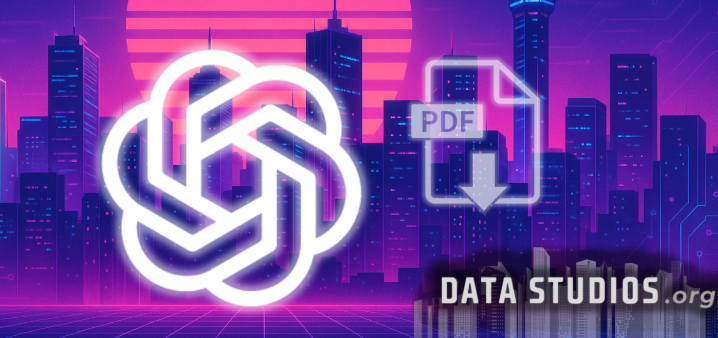ChatGPT PDF Reading: features, limits, and enterprise use.
- Graziano Stefanelli
- Oct 4
- 4 min read

ChatGPT supports PDF reading across its Free, Pro, Team, and Enterprise tiers, allowing users to upload, analyze, and query documents directly. This functionality extends beyond simple text extraction, enabling grounded Q&A, summarization, and data analysis. In 2025, OpenAI has clarified upload size caps, token ceilings, and advanced features such as Visual Retrieval in enterprise environments. These updates define how individuals, professionals, and organizations can leverage PDF reading as part of their workflow.
·····
.....
How PDF uploads work in ChatGPT.
Users can upload PDFs through the paperclip icon in the ChatGPT interface or via the API where file-capable models are enabled. Once uploaded, the model indexes the file, extracts its text, and allows users to issue targeted prompts such as:
“Summarize this PDF into 5 key points.”
“Extract all numerical tables from Section 3.”
“Compare the introduction of this paper to the methods section.”
If Data Analysis is turned on, ChatGPT can process tabular data inside PDFs to generate charts, pivoted summaries, or trend visualizations, making it useful for business, academic, and research contexts.
·····
.....
File size and token limits.
ChatGPT enforces both file size and token-based limits for uploaded PDFs.
Constraint | Limit | Notes |
File size | 512 MB per file | Applies across Free, Pro, Team, and Enterprise. |
Token ceiling | ~2,000,000 tokens per text-based file | Does not apply to spreadsheets; very long PDFs may require chunking. |
Image size (in PDFs) | 20 MB per image for embedded graphics | Larger images must be preprocessed or removed. |
Concurrent files | Varies by plan (Pro and Team allow more simultaneous uploads) | Higher file counts supported in projects or workspaces. |
Large academic reports, financial disclosures, and technical manuals can therefore be handled in a single session, provided they remain under the 512 MB and token thresholds.
·····
.....
How ChatGPT interprets document structure.
For PDFs that contain a mixture of text, tables, and images, ChatGPT applies different strategies:
Text and headings: Parsed and indexed for semantic Q&A.
Tables: Converted to structured tabular data, suitable for reformatting in Excel or visualization.
Images and diagrams: Handled as text captions by default; full interpretation is unlocked only in Enterprise, which provides Visual Retrieval for extracting insights from embedded figures.
This makes ChatGPT effective for research, financial analysis, and compliance reviews where structured references are needed.
·····
.....
Differences across ChatGPT plans.
Plan | PDF reading features | Limitations |
Free | Upload support (restricted), text extraction, summarization | Daily limits; fewer models support uploads; not all advanced analysis enabled. |
Pro (Plus) | Full uploads up to 512 MB, 2M tokens; Data Analysis option | No Visual Retrieval for embedded figures; capped project file counts. |
Team | Higher file counts in projects, collaborative access | Same per-file limits; shared workspaces manage uploaded files. |
Enterprise | Unlimited messages, Visual Retrieval, governance tools | Contract-based pricing; best suited for organizations requiring compliance. |
This segmentation ensures that casual users can work with small PDFs, while enterprises gain access to image-aware retrieval and administrative controls.
·····
.....
How enterprises use PDF reading.
Enterprise subscribers leverage PDF reading for compliance, research, and large-scale document analysis. Core capabilities include:
Visual Retrieval: Extracts data directly from charts, diagrams, and embedded graphics.
Governance features: SSO, audit logging, and policy controls ensure documents remain within corporate boundaries.
Scalable context use: PDF content is streamed into large context windows, preventing truncation and allowing entire reports to be queried.
Integration: Documents stored in SharePoint, OneDrive, or Google Drive can be imported through connectors, extending usage across existing business stacks.
This makes ChatGPT an effective tool for regulated industries, finance, and academia, where entire PDFs must be read, compared, and analyzed at scale.
·····
.....
Technical limitations and workarounds.
Despite advanced capabilities, some constraints remain:
Scanned PDFs: OCR accuracy varies depending on scan quality; pre-conversion to text-based PDF improves results.
Latency: Very large files near the 500 MB threshold may take longer to index and query.
Model mismatch: Certain reasoning models (e.g., o1/o1-mini) don’t support uploads; users must select a file-capable model.
Token overflow: Long academic or technical PDFs may require splitting sections to stay under token caps.
Best practice is to preprocess files, use targeted prompts for sections, and select the right plan level for the needed feature set.
·····
.....
Table — PDF reading scenarios in ChatGPT.
Scenario | Workflow | Best suited for |
Research paper review | Upload full PDF, summarize sections, extract references | Academics, students, researchers |
Financial reporting | Extract quarterly data, visualize trends | Accountants, financial analysts |
Contract compliance | Highlight key clauses, compare revisions | Legal teams, compliance officers |
Technical manuals | Locate procedures, explain diagrams (Enterprise only) | Engineers, enterprise documentation teams |
Team collaboration | Share PDFs in projects, assign queries | Corporate workgroups, cross-functional teams |
This table shows how ChatGPT adapts PDF handling to specific professional needs.
·····
.....
Operational recommendations.
For casual users, Free access is adequate for light document summaries. Pro subscribers should enable Data Analysis to unlock full table parsing, while Team users can manage shared documents inside projects. Enterprise deployments should prioritize Visual Retrieval and governance controls for industries where diagrams, compliance, and auditability are crucial.
By combining structured upload limits, tier-specific features, and robust context management, ChatGPT transforms PDFs from static documents into dynamic, queryable assets for both individuals and enterprises.
.....
FOLLOW US FOR MORE.
DATA STUDIOS
.....[datastudios.org]




